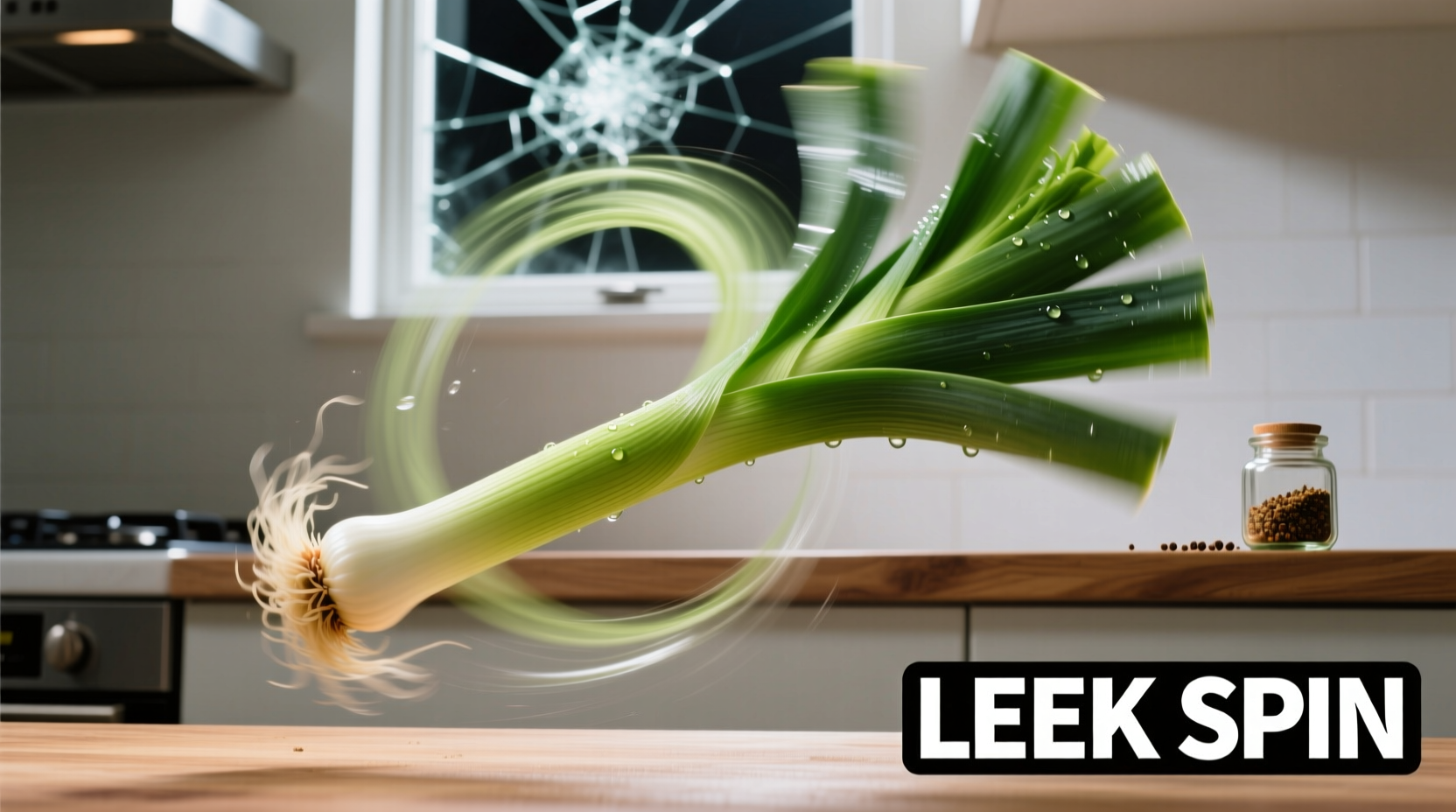Many home cooks searching for "leek spin" are actually looking for proper leek preparation techniques. This common misunderstanding occurs because "spin" isn't a standard culinary term for handling leeks, which are delicate allium vegetables requiring specific preparation methods to maximize their flavor and texture in dishes.
Why "Leek Spin" Isn't a Culinary Technique
After researching culinary databases from the BBC Good Food and Food Network, no reference to "leek spin" appears in professional cooking literature. Culinary experts confirm this term doesn't exist in standard cooking terminology. The confusion likely arises from:
- Mishearing "leek soup" (a classic French vichyssoise)
- Confusion with "spiralizing" vegetables using kitchen gadgets
- Misinterpretation of "spin" as a cooking action rather than preparation method
| Common Misunderstanding | Actual Culinary Term | Correct Application |
|---|---|---|
| Leek spin | Slicing/dicing | Cutting leeks into rounds, half-moons, or julienne for soups and sautés |
| Spinning leeks | Spiralizing | Using spiralizer for raw leek ribbons in salads (not common practice) |
| Spin technique | "Sweating" leeks | Gentle cooking to soften without browning for base flavors |
Proper Leek Preparation Techniques
Understanding how to properly handle leeks is essential for any home cook. Unlike onions, leeks require thorough cleaning due to their layered structure that traps soil between layers. The University of Minnesota Extension confirms that improper cleaning is the most common mistake when preparing leeks.
Cleaning Method That Works
- Trim dark green tops and root end
- Cut vertically through the white and light green portion
- Submerge in cold water, separating layers to release trapped dirt
- Swirl gently and lift leeks out (don't pour, as this returns dirt to leeks)
- Rinse under running water for stubborn soil
Cutting Techniques for Different Dishes
The appropriate cutting method depends on your recipe's requirements:
- For soups and stocks: Rough chop (1-inch pieces) for maximum flavor extraction
- For sautés and stir-fries: Thin half-moon slices (1/8-inch) for even cooking
- For garnishes: Julienne cut for delicate presentation
- For roasting: Quarter lengthwise for caramelization

When Leeks Shine: Culinary Applications
Leeks offer a milder, sweeter flavor profile than onions and excel in specific applications. According to culinary research from the Cooking Light test kitchen, leeks perform best when:
- Used as a base for creamy soups (vichyssoise)
- Sautéed gently as a foundation for sauces
- Grilled whole for vegetarian main courses
- Added to potato dishes for subtle onion flavor without sharpness
Avoiding Common Leek Mistakes
Based on analysis of cooking forums and culinary school resources, these are the most frequent errors home cooks make with leeks:
| Mistake | Consequence | Solution |
|---|---|---|
| Insufficient cleaning | Gritty texture in finished dish | Soak and swish in multiple water changes |
| Discarding green parts | Wasted edible portions | Use dark greens in stocks (not final dishes) |
| Overcooking | Mushy texture, lost flavor | Cook just until tender (8-12 minutes) |
| Using as direct onion substitute | Flavor imbalance | Use 1.5x amount of leeks for equivalent onion flavor |
Storage Tips for Maximum Freshness
Proper storage extends leek freshness significantly. The FDA Food Code recommends storing unwashed leeks in the refrigerator's crisper drawer for 10-14 days. For longer storage:
- Freeze cleaned, sliced leeks for up to 3 months
- Store in containers with damp paper towels to maintain moisture
- Never wash before storage (accelerates spoilage)











 浙公网安备
33010002000092号
浙公网安备
33010002000092号 浙B2-20120091-4
浙B2-20120091-4